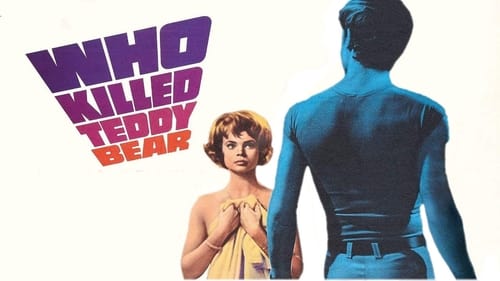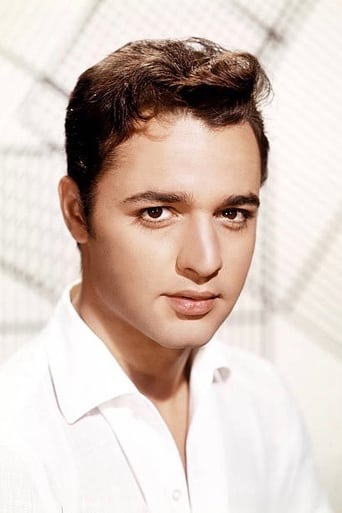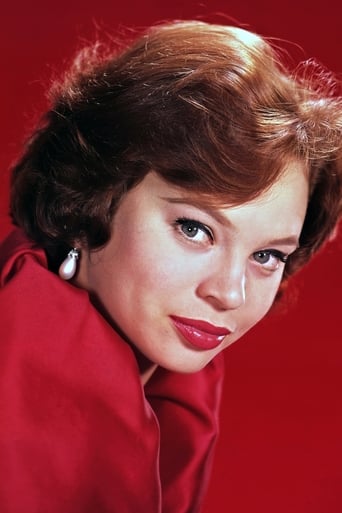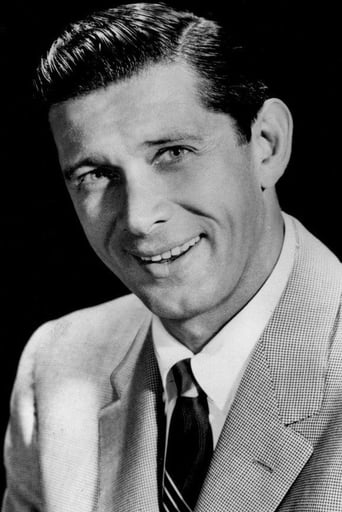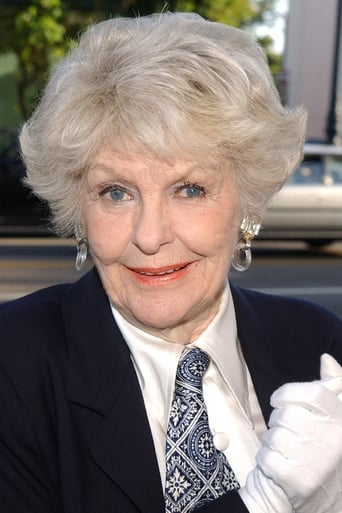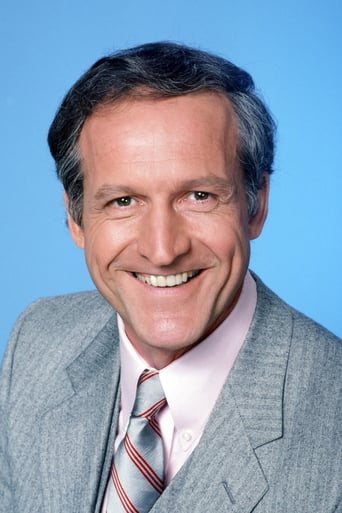Phonearl
Good start, but then it gets ruined
Cleveronix
A different way of telling a story
InformationRap
This is one of the few movies I've ever seen where the whole audience broke into spontaneous, loud applause a third of the way in.
Staci Frederick
Blistering performances.
PrometheusTree64
There is a 94 minute cut out there someplace....Yet this is a remarkable film, and much better than I'd anticipated (I'd never seen it before until recently). Shot in the winter of 1964/65, it's ahead of its time and covers subject matter taboo even now, certainly for mid-'60s Hollywood... It's B&W photography is as haunted and moody as a PSYCHO-era horror film, but TEDDY BEAR has an organic quality about it most Hollywood movies don't have today and didn't have yesterday --- and it reminds those of us old enough to remember of how the cities, from the mid-'60s to the '70s, were beginning to fall apart in the wake of JFK's death and the rise of the incomprehensible Vietnam war (where all our tax dollars were going) -- when peep shows and adult "book stores", with their wares on display in the shop windows, popped up in even "nice" business districts beside Tiffany's, creating a tense and fascinating shabbiness that helped define the schism that was "the '60s".So the cultural meltdown wasn't just about the hippies and their drugs and the acid rock and the protests which would soon follow this movie (not that there was much of a reaction to the film itself, as few people saw it then); for all the romanticizing of that decade (some of which is understandable), Walter Cronkite wasn't entirely wrong when he called the 1960s "a slum of a decade" and TEDDY BEAR hints at that better than most industry films of the time, and serves to remind us that the world of that era wasn't really all that innocent (even if it was a bit naive in other ways). Such was that echo chamber, filled with its cacophony of voices, that was the '60s -- where you had two decades seemingly shoved into one. And with this movie squarely on the cusp of both.Good acting, taut direction, and a lot of layers going on at one time...
dglink
An inept film that represents a major come down for its leading actor, "Who Killed Teddy Bear?" tries to be a moody psychological thriller, but ends up a seedy confused melodrama that dribbles to an unsatisfying finale. After a shadowy chilling opening, the first half is padded out with disco scenes that illustrate 1960's music and dancing at its worst and with a lengthy walk through New York streets intended to emphasize the lead female character's serious ambitions to get a role on Broadway. In contrast, the second half of the film lurches and jumps from one unrelated scene to another, leaving enormous plot holes and dangling threads in its wake.As Lawrence Sherman, a nightclub busboy, Sal Mineo, whose credits include Oscar-nominated performances in "Rebel without a Cause" and "Exodus" does well with what little he is given by Arnold Drake's inadequate script. Inexplicably, Sherman lives with his mentally challenged sister, although any connection with the revelation that he is also a stalker and voyeur dangles among the film's many frayed threads. Mineo often resembles a young Marlon Brando, both in looks and the intensity of his performance. Despite the unsavory role, Mineo's talent is apparent, especially in contrast to the total lack elsewhere in the cast with the exception of Elaine Stritch, who also manages to rise above the wreckage; her brief, but intelligent performance as a nightclub manager shines. As Norah Dain, lovely Juliet Prowse is the center of attention for Stritch, the police lieutenant, assorted drunks, and the voyeur. While she displays her considerable dancing skills in one short scene, Prowse's acting chops pale in comparison. However, in fairness, the script prods the actress into erratic inexplicable mood shifts with little motivation; her swings occur with a suddenness that would give Meryl Streep whiplash. Jan Murray's performance as Lt. Dave Madden is best left unmentioned, and Margot Bennett is embarrassing as Mineo's sister.The moody black and white cinematography is often effective in capturing the seediness of 1960's 42nd Street, and near abstract close-ups suggest an unrealized artistic intent on the part of director Joseph Cates. The latter half of the relatively short film hints at either major censorship cuts or a budget shortfall; a grainy Times Square police chase using a taxicab rather than a squad car suggests the latter. Scenes are cut off inexplicably, and actors are suddenly elsewhere without explanation. A murder goes practically without mention, which leads to an abrupt ending that is beyond comprehension. Evidently, the writer just ran out of ideas, and the director yelled "cut." "Who Killed Teddy Bear?" would be better titled "Who Killed Sal Mineo's Career?" The film is a sad late entry for an actor who began with such promise.
EyeAskance
Pretty, young Juliet Prowse is a NYC discotheque DJ being stalked by sex-psycho Sal Mineo in this flawed but ahead-of-its-time shocker, a film which might appeal to enthusiasts of Sam Fuller's contemporaneous work.With art-house application to grindhouse material, WHO KILLED TEDDY BEAR should have a broader appeal than it does. Performances are strong by the most of the cast(especially Elaine Stritch as Prowse's inured lesbian boss, Jan Murray as the solicitous investigator, and Mineo...a deeply disturbed but ultimately pitiable predator). Unfortunately, the film is marred significantly by the comically written and overplayed character of Mineo's little sister, doomed to eternal childhood as the result of a tragic accident.Though there is intermittent creative camera-work at hand, the overall production values are pretty low. Fortunately, the tawdriness of the whole affair calls for just that, and WHO KILLED TEDDY BEAR succeeds, perhaps despite itself. It's a gripping, stark, and quite depressing meditation on obsession, loneliness and perversion which touches bravely on every taboo in the book. Nonetheless, this rife lurid sensationalism feels strangely at-odds with the customary sleaze that exploitation cinema celebrates...the tone here is otherwise rather cautionary, perhaps propelled by the whiling fears of 60s-era reactionaries. The times, they were a-changing, and many at the far-right felt the nation's moral compass had become a pinwheel in the wind.7.5/10. Classic of its kind.
Falconeer
Here is one of the lost gems of the early 60's. Joseph Cates "Who Killed Teddy Bear" is a dark, seedy, and sex obsessed oddity that must have unnerved audiences in it's day. The sexy Nora Dane, played by Juliette Prowse, is receiving some very disturbing phone calls, complete with heavy breathing and some obscene suggestions. She doesn't know who this man is, but he seems to know a lot about her, like her name, where she lives, where she works, and what she looks like in her underwear. Elaine Strich plays the tough talking owner of the swinging nightclub where Nora works as a deejay. Her interest in the young Nora goes beyond simple friendship. After the mysterious phone calls become more threatening, Nora consults a detective, who has his own perverse obsessions. And then there is Lawrence, played by Sal Mineo, a shy and polite busboy who works at the club with Nora. And Nora seems to be the center of everyones obsessions, probably due to the fact that she seems to have no interest in sex at all. "Who Killed Teddy Bear" is filmed with an incredible amount of style, in shadowy, dreamlike black & white. For the segments featuring the obscene phone caller, the camera lens actually seems to be fogged up from the body heat and animal lust of the near naked stalker, as he lies on his bed and enjoys the sound of fear in the woman's voice, as he describes what he wants to do to her. And then there are the amazing shots of New York city, by day and night. Everything is light and shadow, lurid and overwrought. This is classic film noir, and it's low budget only adds to it's unique appeal, and adds an extra level of sadness and desperation to the tale. Sal Mineo especially, is outstanding here, as the sexually messed up loner, who lives with his retarded sister in a gloomy apartment. Why Sal never made it on the same level with James Dean and Brando, I cannot understand. This guy always turned in a great performance in everything he did, and possessed an incomparable screen presence. i recommend 'Teddy bear' to people who love cinema, and who have an appreciation for the art of film making. Though it is difficult to find, as there has never been an official video or DVD release, and most likely never will be. There are various online distributors selling bootlegs of this and other Sal Mineo titles, ranging from very good to poor quality. See this if you can. It's unforgettable.
